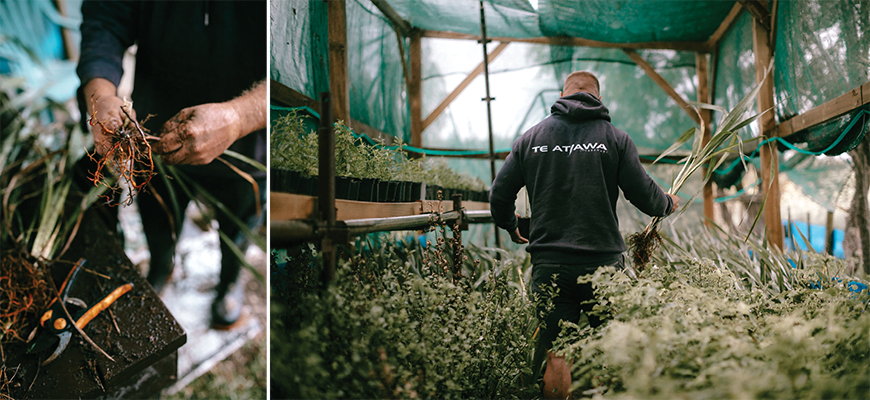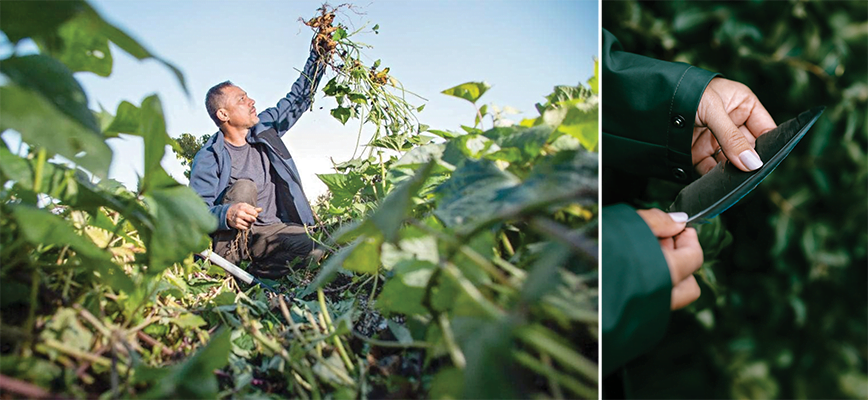Te Kāhui Rau Aims to Revitalise Te Taiao Through Hapū Whenua and Whānau
Three place-based projects have been awarded funding as part of the Revitalise Te Taiao research programme. Taranaki-based Te Kāhui Rau, a project led by Ngāti Tāwhirikura, has been allocated $860,000 to revitalise hapū whenua and whānau.
The National Science Challenge funding allocated to the Revitalise te Taiao programme has seen three place-based research pilots receive a share of $8 million. The Taranaki-based Te Kāhui Rau project has been allocated $860,000 to fund research that aims to revitalise the health and vitality of hapū whenua and whānau.
Te Kāhui Rau means together we grow infinitely stronger. The name represents the hopes and aspirations of whānau and hapū of Ngāti Tāwhirikura of Te Ātiawa in Taranaki.
At the helm of this kaupapa are Glen Skipper (Te Ātiawa Nui Tonu, Taranaki Tūturu Iwi, Ngāti Tama, Ngāti Rāru) and Bry Kopu (Ngāti Mutunga, Te Ātiawa Nui Tonu). Together they bring a wealth of mātauranga and experience from working at the grassroots of Māori, whānau and hapū development, and in indigenous governance, business and leadership.
“Te Kāhui Rau is the first step in our movement and long-term commitment towards the healing and restoration of the mana and mauri of te Taiao,” says Glen Skipper. “[This project will] define connection with te Taiao through whakapapa, mātauranga Māori, indigenous practices, and science.”
Te Kāhui Rau is a research and regeneration kaupapa. The project plans to take a kaupapa Māori and hapū-tanga (sub-tribal) approach to maintain status as a Treaty partner and uphold mana motuhake (mana through self-determination and control over one's own destiny).
The Taranaki history, entrenched in the whenua and Taiao, saw tīpuna stripped of their ancestral lands through confiscation and colonisation. The loss of rangatiratanga extinguished a way of living on the whenua with a devastating impact on te Taiao, hapūtanga and mātauranga.
“Te Kāhui Rau is the first step in our movement and long-term commitment towards the healing and restoration of the mana and mauri of te Taiao”
— Glenn Skipper, Te Kāhui Rau project co-lead
Te Kāhui Rau will work to restore the mana and mauri of the whenua and, as a result, the mana and mauri of the whānau within the hapū of Ngāti Tawhirikura.
Revitalise te Taiao presents opportunities that will help bring whānau back to their ancestral lands and feel the earth beneath their feet that their tupuna once lived on: whenua, wai ora and te Taiao that provided sustenance for hapū of Te Ātiawa. As they gaze towards their sacred mountain of Taranaki, it’s a landmark of who they are and where they are from.
The Te Kāhui Rau project team believes the Revitalise te Taiao research program will reignite a connection for whānau to their whenua and Taiao, where they can utilise mātauranga Māori and modern science to plant seeds and nurture growth that will benefit generations to come.
Revitalise te Taiao will enable Te Kāhui Rau to run a series of wānanga, events and activities that will stimulate healing for whānau within their own homes and neighbourhoods in the Taranaki rohe, and amongst whānau and hapū throughout Aotearoa.
The Te Kāhui Rau framework will extend beyond whenua-based activities and into programmes of whānau, community and economic development.

“The inclusive approach to sharing knowledge and the insights gained from Revitalise te Taiao will benefit our neighbouring hapū and ngā iwi of Taranaki.”
— Bry Kopu, Te Kāhui Rau project co-lead
“The commitment to revitalise te Taiao is long-term,” says Bry Kopu. “This programme will inform best-practice and set the agenda now and into the future. The inclusive approach to sharing knowledge and the insights gained from Revitalise te Taiao will benefit our neighbouring hapū and ngā iwi of Taranaki.”
“Similarly, our local Ngāmotu (New Plymouth) community will also benefit from accessible opportunities for shared learning and events that explore mātauranga Māori-based regenerative practices, such as māramataka (Māori lunar calendar) planting, as well as the reinforcement of te reo Māori and tikanga that restores mana and mauri to te Taiao.”
Te Kāhui Rau will work with Māori food producers and non-Māori Taranaki regenerative sector networks to increase opportunities to share knowledge and work together to progress an approach that is culturally responsive, supports economic growth, and progresses enviromental initiatives.
Te Kāhui Rau will utilise mātauranga Māori and science to enhance and restore key elements to the biodiversity of te Taiao including: soil health, water quality, flood defence, bush regeneration, riparian planting, crops and animal management.
Te Kāhui Rau is currently working with scientists to build baseline data and identify opportunities to utilise new technology and research that will inform and support traditional practices to build a comprehensive new Indigenous Regeneration Framework.
“A core component of our project is the return of whenua to our hapū of Ngāti Tāwhirikura and the impact that has on our development and ability to positively impact te Taiao within our rohe”
— Glenn Skipper, Te Kāhui Rau project co-lead

Te Tiriti o Waitangi principles will help to pave a way forward for Te Kāhui Rau on indigenous co-design and partnerships. “The Taiao Manawa Ora model and framework will enable us to activate many of our aspirations across our proposal with our partners,” says Glen Skipper. “We are hopeful that our framework of partnership will demonstrate a successful model that is adaptable for other rohe.
“A core component of our project is the return of whenua to our hapū of Ngāti Tāwhirikura and the impact that has on our development and ability to positively impact te Taiao within our rohe. To reach that goal it is necessary for us to work with our Treaty partner (New Plymouth District Council) in a way that enhances the mana of both partners and respects our relationship into the future.”
Te Kāhui Rau is the beginning of a movement to impact positive change for whānau and hapū of Ngāti Tāwhirikura now and for future generations to come through the revitalisation of te Taiao.
By March 2024, Te Kāhui Rau will have developed and refined a conceptual, research-based framework for ongoing revitalisation of te Taiao. The project's goal is to utilise research insights to fully implement their Indigenous Regenerative Systems Framework to heal and restore the mana and mauri of te Taiao, to revitalise the health and vitality of hapū whenua and whānau.
More information:
- Te Kahui Rau website
- Revitalise Te Taiao programme
Banner photo: Overlooking Te Rewarewa and the Coastal Walkway in Ngāmotu (New Plymouth), the primary location of Te Kāhui Rau.
Author
 View Our Strategy Document 2019 – 2024
View Our Strategy Document 2019 – 2024




Leave a Reply